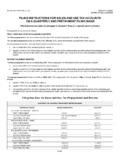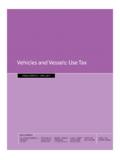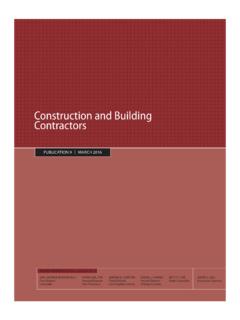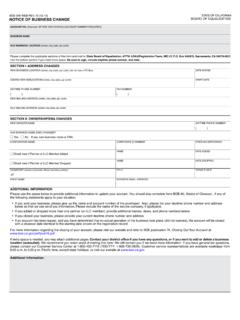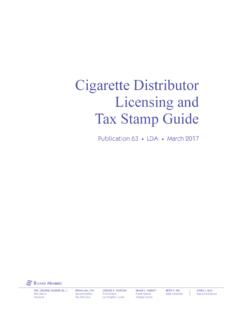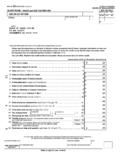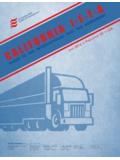Transcription of California Property Tax - California State Board of ...
1 PUBLICATION 29 | JULY 2015 California Property Tax An OverviewPUBLICATION 29| JULY 2015 Board MEMBERS (Names updated 2016)SEN. GEORGE RUNNER (Ret.)First DistrictLancasterFIONA MA, CPAS econd District San FranciscoJEROME E. HORTONT hird DistrictLos Angeles CountyDIANE L. HARKEYF ourth DistrictOrange CountyBETTY T. YEES tate ControllerDAVID J. GAUE xecutive DirectorPREFACEC alifornia Property Tax provides an overview of Property tax assessment in California . It is designed to give readers a general understanding of California s Property tax system. The publication begins with a brief history of Proposition 13, which since 1978 has been the foundation of California s Property tax system. It then discusses the roles of key players in Property tax assessment California voters, the Legislature, the State Board of Equalization, and county assessors.
2 It explains which types of Property are subject to taxation and which are exempt. It addresses the issue of where Property should be assessed. It discusses the annual process of preparing the Property tax rolls, the procedure for challenging an assessment, and the process for collecting Property taxes. Finally, it covers the yield tax on timber at the time of its this publication is periodically updated, the laws and rules concerning Property tax assessment are continually modified. Therefore, we caution you to consult appropriate sections of the Revenue and Taxation Code and related codes and Property tax regulations in order to have the most current welcome your suggestions for improving this publication. Please call 1-916-274-3350 or send your suggestions to:County-Assessed Properties Division, MIC:64 State Board of Equalization PO Box 942879 Sacramento, CA 94279-0064If you need more information about California Property tax, visit us at Our website has the complete text of the Assessors Handbook sections, special topic and assessment practices surveys, the Property Taxes Law Guide, Property Tax Rules, Annotations, Letters To Assessors, guidelines and procedures, issue papers, and other publications.
3 In addition, you will find a listing of the addresses and telephone numbers for county assessors offices and answers to the most frequently asked questions about Property tax issues. You can read Property Tax Committee work plans and current information about Board meeting dates. The website also contains a calendar of Property tax : This publication summarizes the law and applicable regulations in effect when the publication was written, as noted on the cover. However, changes in the law or in regulations may have occurred since that time. If there is any conflict between the text in this publication and the law and/or regulations, the latter are contact your Board Member, see PageThe Background of Property Taxes in California 1 The Role of Voters and the Legislature 2 The Role of the State Board of Equalization 2 The Role of the County Assessor 5 Taxable Property 6 Property Tax Exemptions 7 Other Property Tax Relief Measures 8 Where Property is Taxed 10 The Assessment Process 10 The Appeal Process Local Equalization 11 Tax Collection 12 Timber Yield Tax 13 Timber Yield Tax Appeals 14 Glossary of Property Tax Terms 15 Appendixes1.
4 Contents, Property Tax Rules, California Code of Regulations 192. Recommended Reading 313. Board Members/Executive Administration/ Property Tax Department 324. County Assessors Names and Addresses 33 For More Information 37 IMPORTANT Property TAX DATES (2009)January 1 Lien date for all 15 Legal deadline for filing most exemption claims. Last day to file a timely exemption claim for cemeteries, colleges, exhibitors, free public libraries, free museums, public schools, and churches. Last day to file a timely exemption claim for veterans, disabled veterans, and homeowners. Last day to file timely exemption claims for welfare and veterans 10 Last day to pay second installment of secured taxes without 1 Deadline for county assessor to complete local assessment 2 September 15 or Taxpayers file applications for reduction in assessed value with clerk of countyNovember 30 Board of 31 Last day to pay unsecured taxes without 10 Last day to pay first installment of secured taxes without penalty.
5 Last day to file an exemption claim for homeowners and veterans to receive 80 percent of the exemption. Last day to file an exemption claim for disabled veterans to receive 90 percent of the : For a complete list of significant dates, see Property Taxes Law Guide, Volume 1, Property Tax Calendar. A calendar pertaining to valuation dates for public utilities and railroads is also available on our 2015 | California Property TAXTHE BACKGROUND OF Property TAXES IN CALIFORNIAP rior to 1912, the State derived up to 70 percent of its revenue from Property taxes. The State no longer relies on Property taxes as its primary source of funds since 1933, the only Property tax directly levied, collected, and retained by the State has been the tax on privately owned railroad cars. Currently, the State s principal revenue sources are personal income taxes, sales and use taxes, bank and corporation taxes, and a series of excise taxes.
6 The State Board of Equalization (BOE) administers sales and use taxes and excise taxes, while the Franchise Tax Board administers the personal income and bank and corporation , it is California s counties, cities, schools, and special districts that depend on the Property tax as a primary source of revenue. The Property tax raised more than $ billion for local government during 2013-14. These funds were allocated as follows: counties 15 percent, cities 12 percent, schools (school districts and community colleges) 54 percent, and special districts 19 13On June 6, 1978, California voters overwhelmingly approved Proposition 13, a Property tax limitation initiative. This amendment to California s Constitution was the taxpayers collective response to dramatic increases in Property taxes and a growing State revenue surplus of nearly $5 billion.
7 Proposition 13 rolled back most local real Property , or real estate, assessments to 1975 market value levels, limited the Property tax rate to 1 percent plus the rate necessary to fund local voter-approved bonded indebtedness, and limited future Property tax Proposition 13, county Property tax revenues dropped from $ billion in 1977-78 to $ billion in 1978-79. As a result, many local governments were in fiscal crisis. Keeping local governments in operation the first two years following Proposition 13 required legislative bailouts to offset Property tax revenue losses. A first-year stopgap measure costing $ billion in State surplus funds was necessary to directly aid local governments. A second-year bailout, a long-term fiscal relief plan, cost the State $ to 1978, real Property was appraised cyclically, with no more than a five-year interval between reassessments.
8 Since Property values were systematically reviewed and updated, assessed values were usually kept at or near current market value levels. In contrast, under Proposition 13, properties are reassessed to current market value only upon a change in ownership or completion of new construction (called the base year value). In addition, Proposition 13 generally limits annual increases in the base year value of real Property to no more than 2 percent, except when Property changes ownership or undergoes new construction. Essentially, Proposition 13 converted the market value-based Property tax system to an acquisition value-based in Assessed ValueUnder Proposition 13, similar properties can have substantially different assessed values based solely on the dates the properties were purchased. Disparities result wherever significant appreciation in Property values has occurred over time.
9 Longtime Property owners, whose assessed values generally may not be increased more than 2 percent per year, tend to have markedly lower tax liability than recent purchasers, whose assessed values tend to approximate market Challenges to Proposition 13 Immediately after Proposition 13 passed, its constitutionality was challenged. The California Supreme Court upheld the constitutionality of Proposition 13 in Amador Valley Joint Union High School District v. State Board of Equalization on September 22, 1978. The decision rendered in this case remained the highest judicial ruling on Proposition 13 until 1992, when the United States Supreme Court ruled, in Nordlinger v. Hahn, that Proposition 13 did not violate the equal protection clause of the United States Constitution. This ruling effectively ended speculation about whether the judicial system would ever overturn or modify Proposition ROLE OF VOTERS AND THE LEGISLATURET ogether, the electorate and the Legislature of California have reshaped the administration of Property taxes since 1978.
10 Constitutional amendments, both voter-initiated (initiative constitutional amendments) and Legislature-initiated (Assembly or Senate constitutional amendments), have established fundamental changes. Meanwhile, legislative measures have interpreted, clarified, and implemented the constitutional ROLE OF THE State Board OF EQUALIZATIONThe BOE was established in 1879 by constitutional amendment. The BOE consists of five elected members: four members are elected from legislatively defined districts, while the fifth member, the State Controller, is elected at-large and serves in an ex officio capacity. The BOE s original purpose was to regulate county assessment practices, equalize county assessment ratios, and assess properties of railroads. Since its creation, the Board s duties have progressively expanded. In addition to its Property tax responsibilities, the Board administers a variety of State and local business tax Need for Uniform AssessmentsWhile the county assessor determines the value of locally assessable Property for taxation purposes, the BOE has a vested interest in the valuation by virtue of its constitutional responsibility to promote uniformity in Property assessments throughout the State .

